Wondering what vegetables are in season in the spring? We’re covering our favorite spring vegetables (and how to use them!)
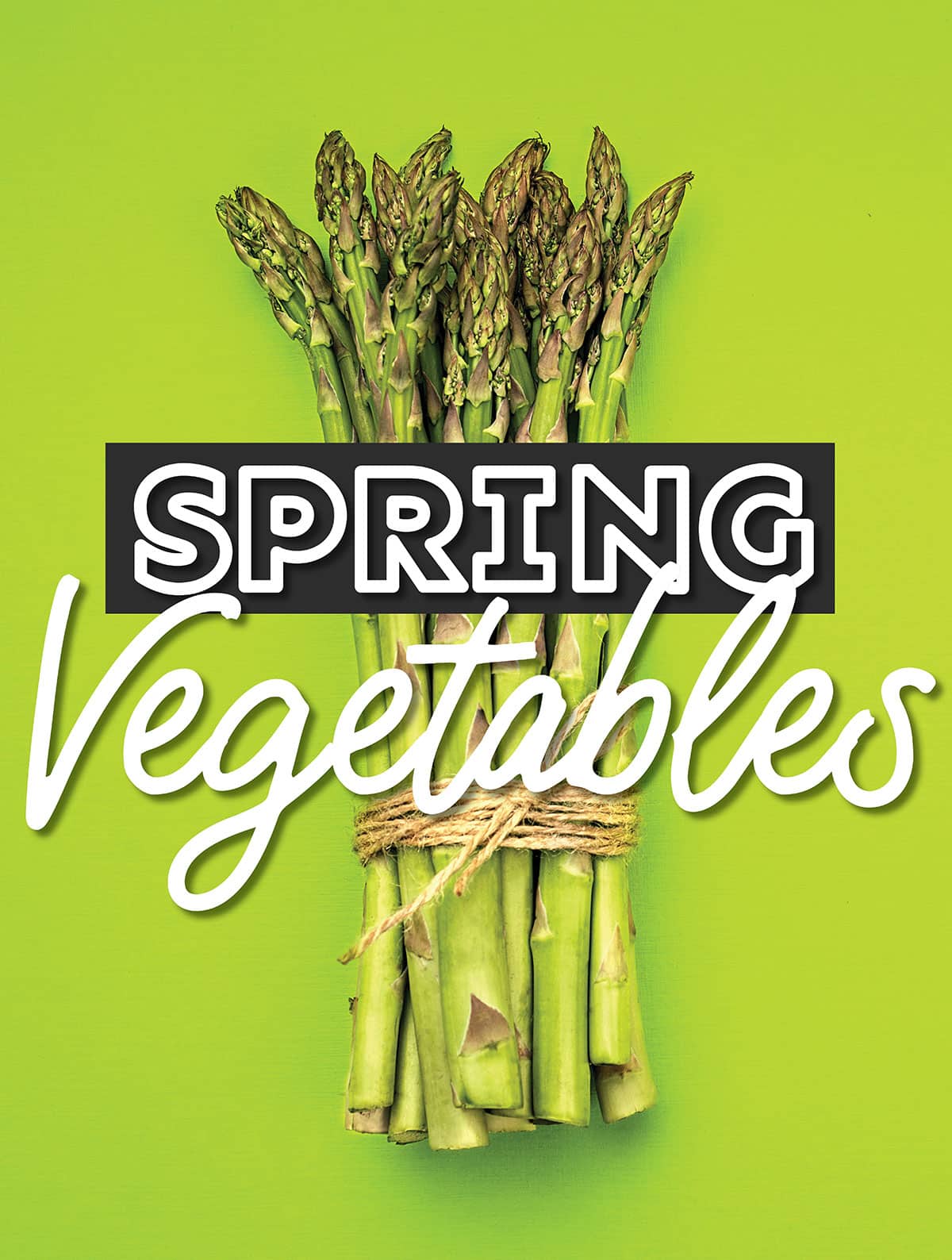
Spring is here and with it comes a bounty of fresh and delicious vegetables. As the weather warms up and the days get longer, farmers are bringing in a variety of greens, root vegetables, and delicate shoots that are perfect for incorporating into your meals.
From asparagus and artichokes to peas and radishes, there are so many delicious options to choose from. In this blog post, we’ll take a look at some of the most popular spring vegetables and discuss how to prepare them in a variety of ways. Whether you’re a seasoned cook or just starting out, there’s something for everyone in this guide to spring vegetables. So, let’s get started and explore the delicious world of spring produce!
Our focus today is on Northern American spring vegetables. Many vegetables can be bought year round because they are shipped from around the world. But there is something to be said for buying locally grown veggies in peak season, or even better just growing some of these yourself!
Spring Trivia!
What is the first day of spring? (scroll to the end of this post for the answer!)
1. April 1st
2. June 21st
3. April 27th
4. March 20th
Spring Vegetable Nutrition Information
Most of America’s favorite spring veggies are off the chart healthy! They all tend to be high in Vitamin C, and provide a wide variety of micronutrients and fiber. Dietitians agree that making vegetables an integral part of your diet can aid in lowering blood pressure, boosting your immune system, and potentially aiding in weight loss.
Nutrition for common spring veggies
Fiber measured in grams, Vitamin C and A measured in % of your RDA.
| 100 g (3.5 oz) | Calories | Fiber | Vit. C | Vit. A |
| Artichokes | 47 | 5.4 | 20 | 0 |
| Asparagus | 20 | 2.1 | 9 | 15 |
| Avocado | 120 | 5.6 | 29 | 3 |
| Broccoli | 34 | 2.6 | 149 | 12 |
| Cabbage | 25 | 2.5 | 61 | 2 |
| Leeks | 61 | 1.8 | 20 | 33 |
| Spinach | 24 | 3.4 | 4 | 1 |
Popular Spring Vegetables
There are of course hundreds of types of vegetables popping up in the spring, but these are the most popular 21 types of spring vegetables to enjoy this season!
- Artichoke
- Arugula
- Asparagus
- Avocados
- Broccoli
- Cabbage
- Carrots
- Collard Greens
- Delicate Herbs: Basil
- Delicate Herbs: Chives
- Delicate Herbs: Parsley
- Fava Beans
- Garlic
- Leeks
- Mushrooms
- Peas
- Radish
- Rhubarb
- Spinach
- Turnips
- Watercress
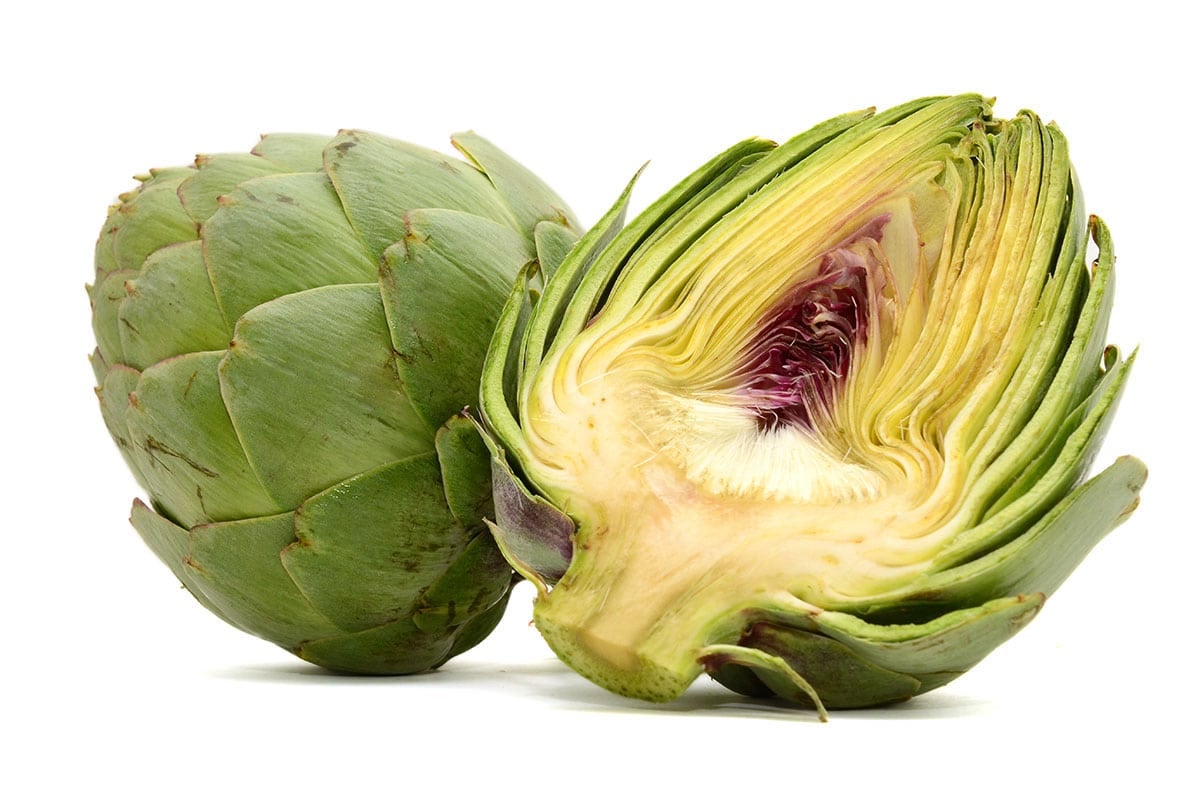
Artichoke
Artichoke’s prime season in California is February until June. We will use California as the standard for our seasonal descriptions because so much of U.S. produce comes from California. Artichoke is native to the Mediterranean Sea Region, and the top four producers in the world are still Mediterranean nations (Italy, Egypt, Spain, and Algiers).
Artichoke is actually a species of thistle, but don’t let that lead you into thinking it isn’t a healthy vegetable. Artichoke contains two bioactive agents apigenin and luteolin, giving it one of the highest antioxidant contents of any vegetable. But if you need any more inducement to eat artichokes, give this Healthy Spinach Artichoke Dip a try.
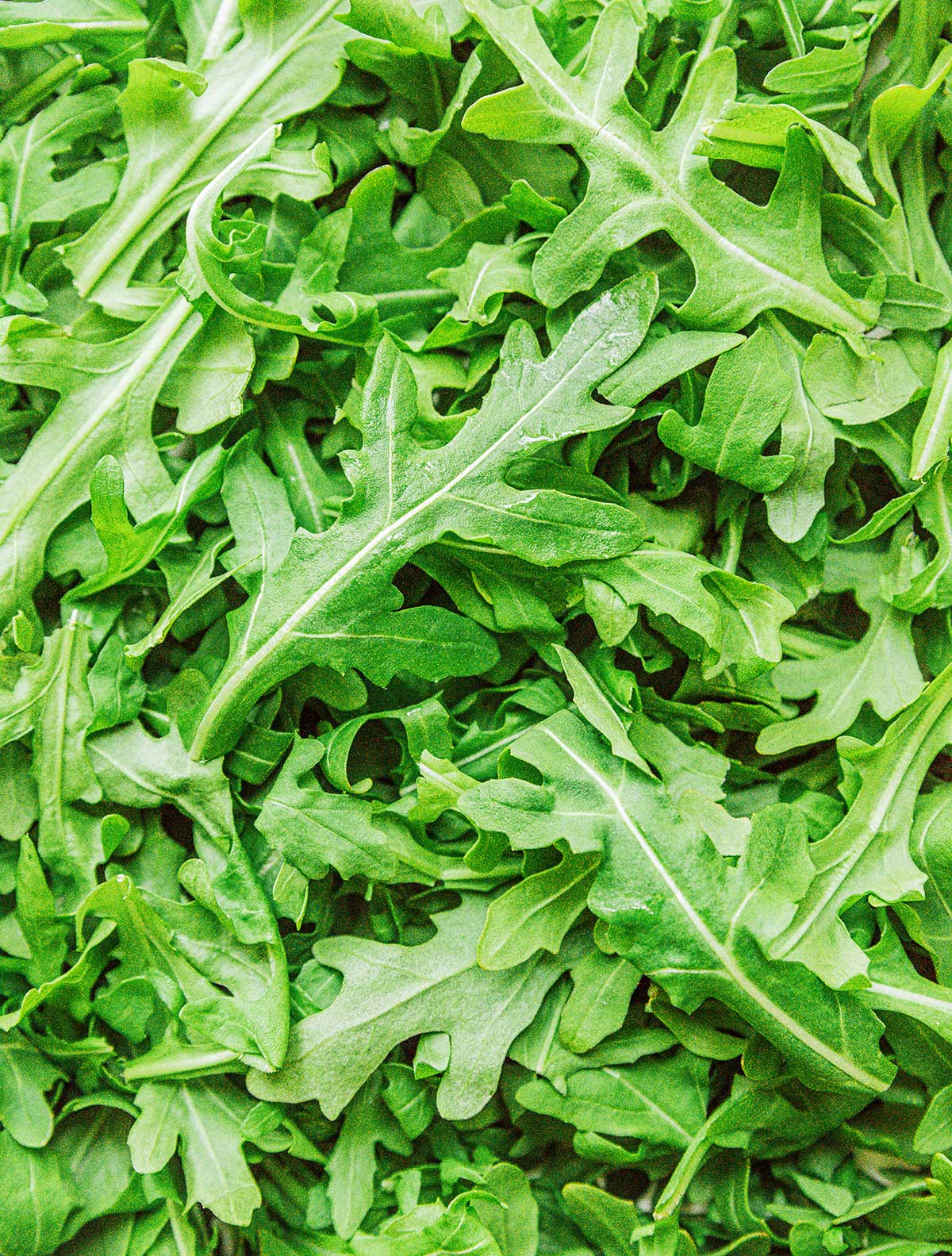
Arugula
Arugula lettuce is a great option for use on sandwiches, adding to salads, or topping pizzas! Arugula is also commonly called Rocket because of its pointy leaves. Arugula originated in the Mediterranean before the Roman era (about 2,500 years ago). It was used then for medicinal purposes and as an aphrodisiac.
Arugula is slightly tart with a bit of a peppery taste, and can be used in many of the same ways that you would use other varieties of lettuce. It forms a great salad base, sandwich topping, or recipe addition, and can be enjoyed both raw or cooked! Try it in these Arugula Grain Bowls, or on a Rocket Pizza. For a whole lot more on arugula to include nutrition info, how to prepare, store, and cook with arugula check out Arugula 101.
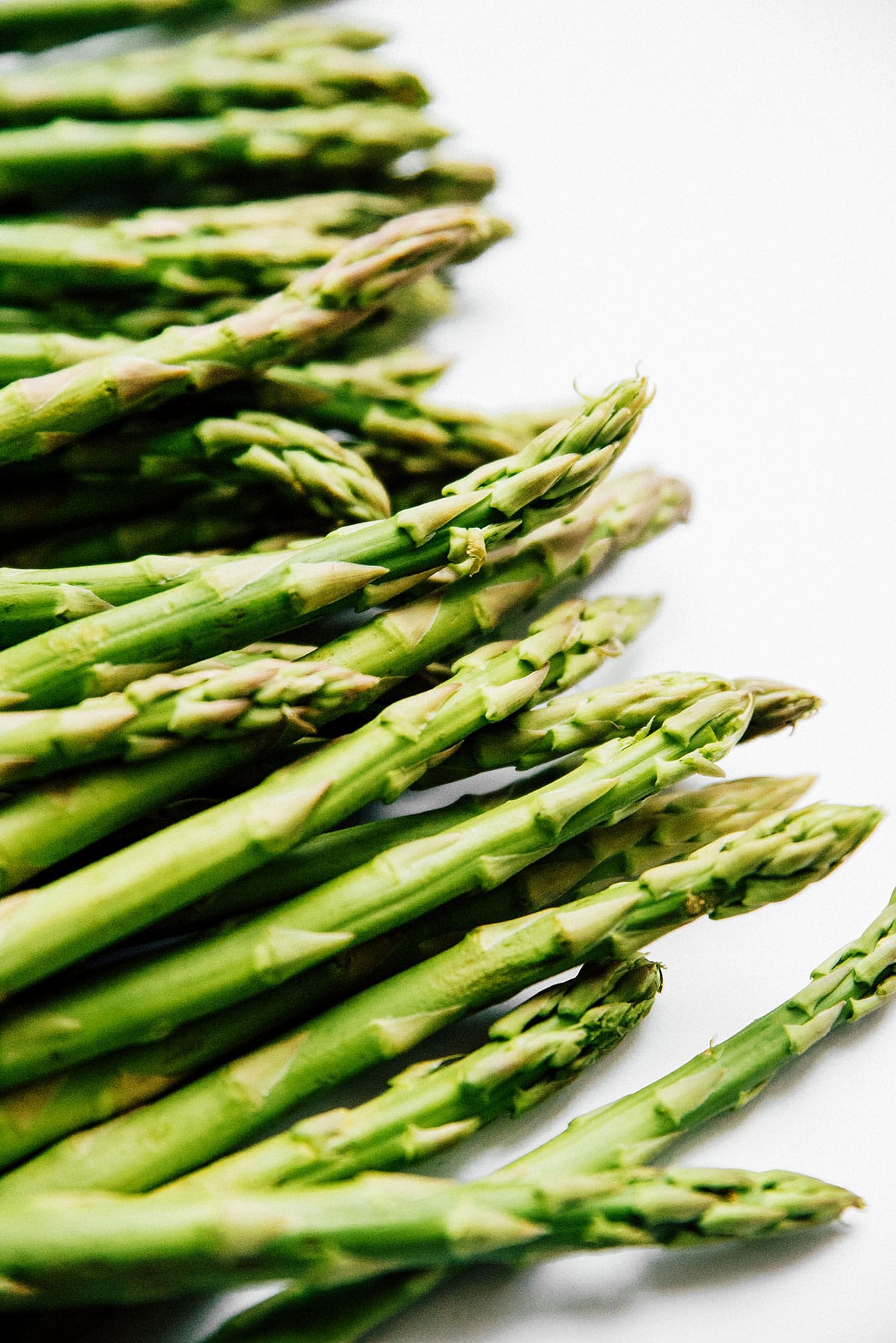
Asparagus
Asparagus’ prime season is February until May, and potentially longer in northern climates. Asparagus is harvested while it is fairly young. Once the tips of the asparagus begin to open, the stalks turn very woody and it is game over for use in most recipes. Generally the thinner the stalk, the younger and more tender the asparagus. There are three prime types differentiated by color:
- Green: The most popular variety in the USA, these should be available in most supermarkets during the spring.
- White: This is grown by covering the asparagus completely with soil so that they never see sunlight and begin to photosynthesize. White asparagus is more tender and less bitter. It is harder to find in the USA than in Europe where they, particularly the Germans, love it.
- Purple: This variety, hailing from Italy, is said to have a slightly nuttier flavor than green asparagus and is less fibrous.
The easiest way to cook asparagus is to coat it with olive oil, sprinkle on your favorite spices, and put them in the air fryer. Here are another 5 Great Ways to Cook Asparagus, and if you want to know more check out Asparagus 101!
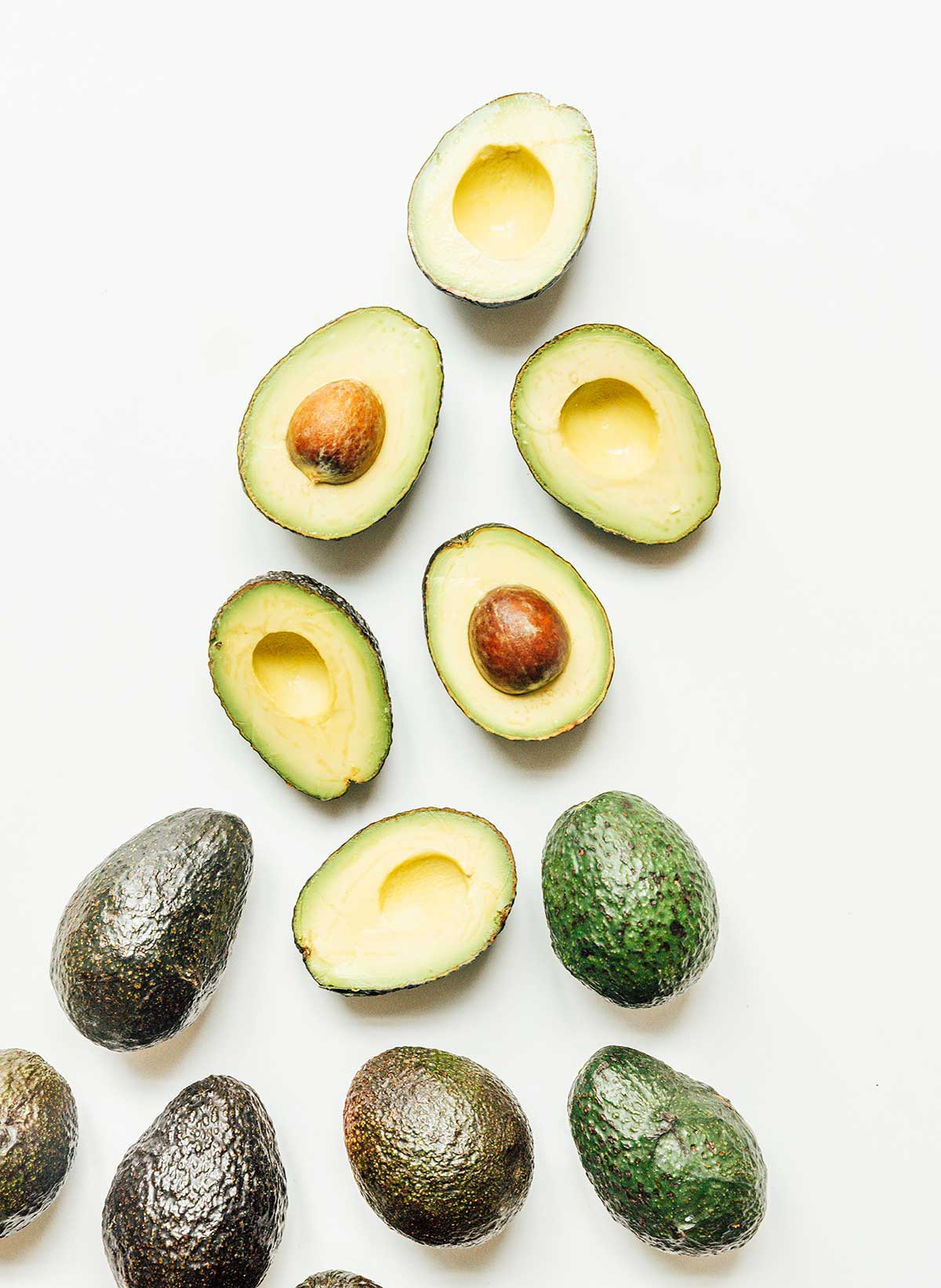
Avocados
You can buy avocados year round, but they peak in the USA from April to June just in time for a lot of great cookout uses. T
Oh, and yes we know it is technically a fruit, but we eat it more like a veggie as in this Avocado Corn Salad or Mediterranean Quinoa Salad. Either is a great side dish to take along to your next cookout invite. You won’t likely bring much home!
America’s love for avocados is actually fairly recent. Avocados are native to Mexico, and Mexican fruits were banned in the USA until the 1990s. Once the door opened to importing them, the flood gates opened as we love our avocados. You might say we have gone avo-control on this fruit.
Looking for further avocado inspiration? Try any of these 17 Ways to Eat Avocado for Dinner, but don’t limit avocados to Mexican cuisine and salads. After a workout blend up an Easy Avocado Chocolate Smoothie,
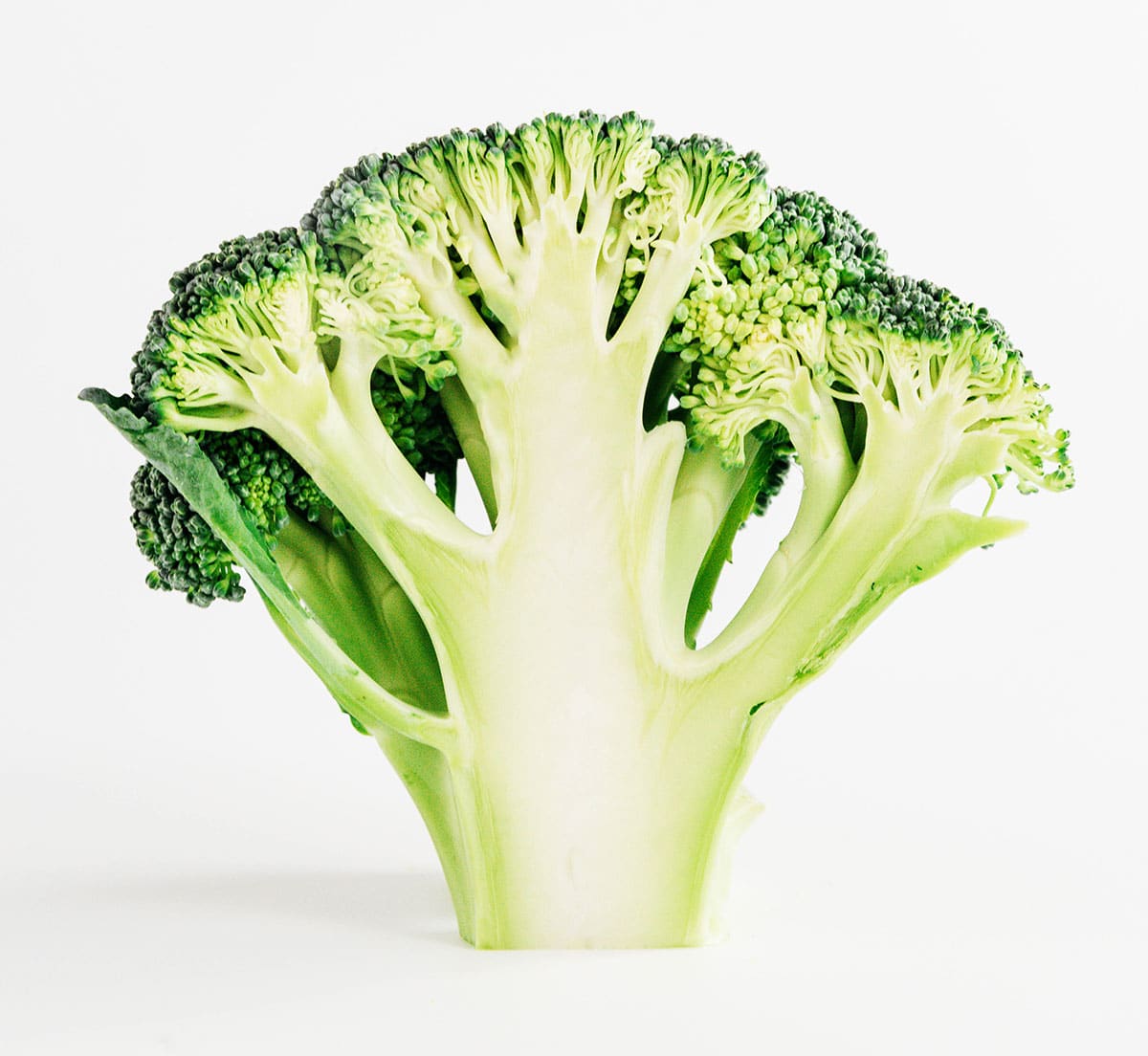
Broccoli
Broccoli is generally planted in the spring for early summer harvesting, making it both a spring and summer veggie. Fortunately it is available in the grocery year round as it is great in cuisines of all seasons.
On chilly spring days this Healthy Broccoli Casserole is always a hit, and as it warms up into cookout season give these three sides/salads a look. You might just find your go to salad for cookouts.
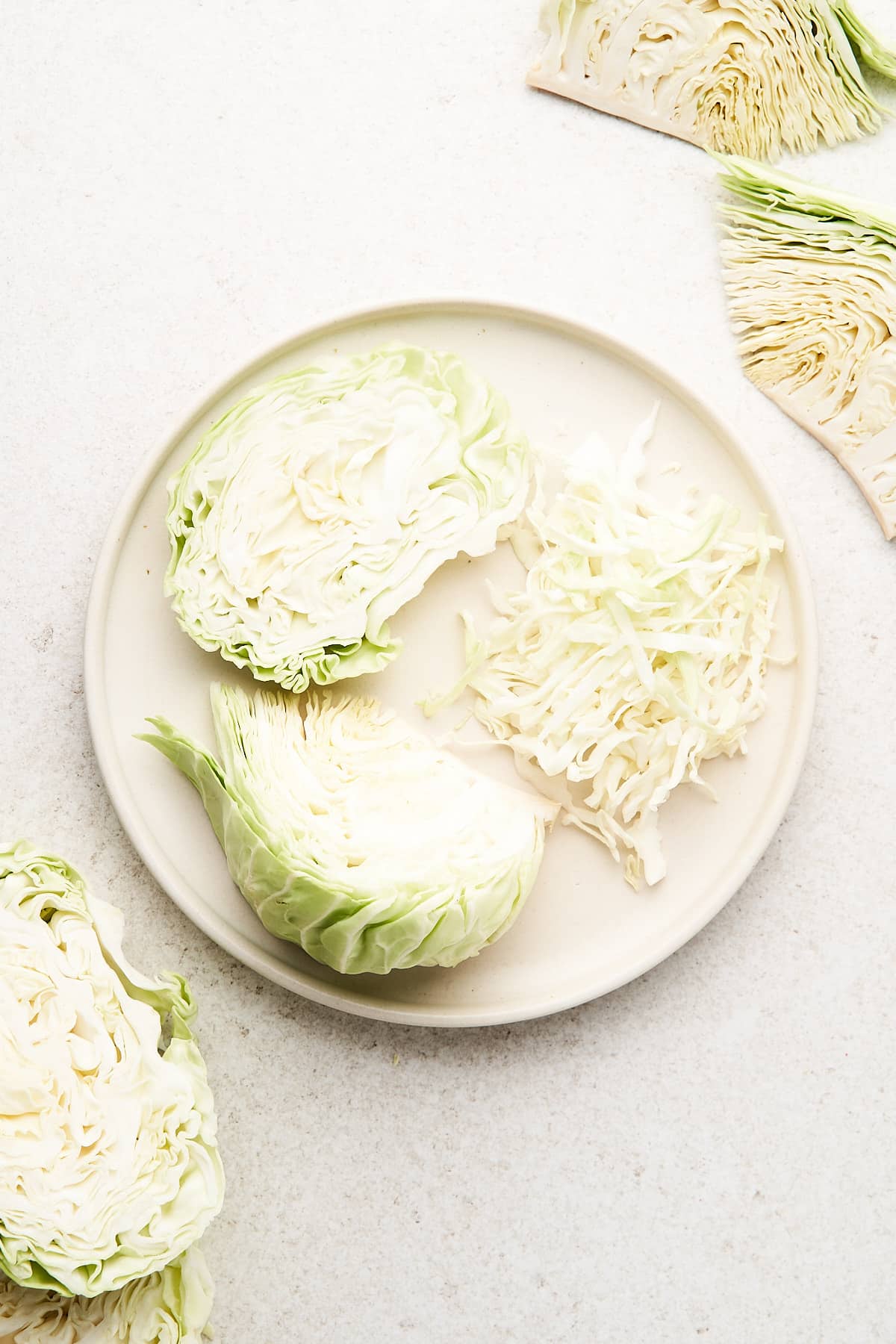
Cabbage
Cabbage is typically in season right through June in most regions. Cabbage is in the same family as Brussels sprouts, broccoli, and kale, and is considered a cruciferous vegetable.
There are different varieties of cabbage, to include green, red, savoy, and napa. Green and red are the most common with red being a European favorite used in both salads and as a side dish.
Give the green a try in this Thai Cabbage Salad, and if you want to try a healthy new smoothie give this Berry Cabbage Smoothie a shot.
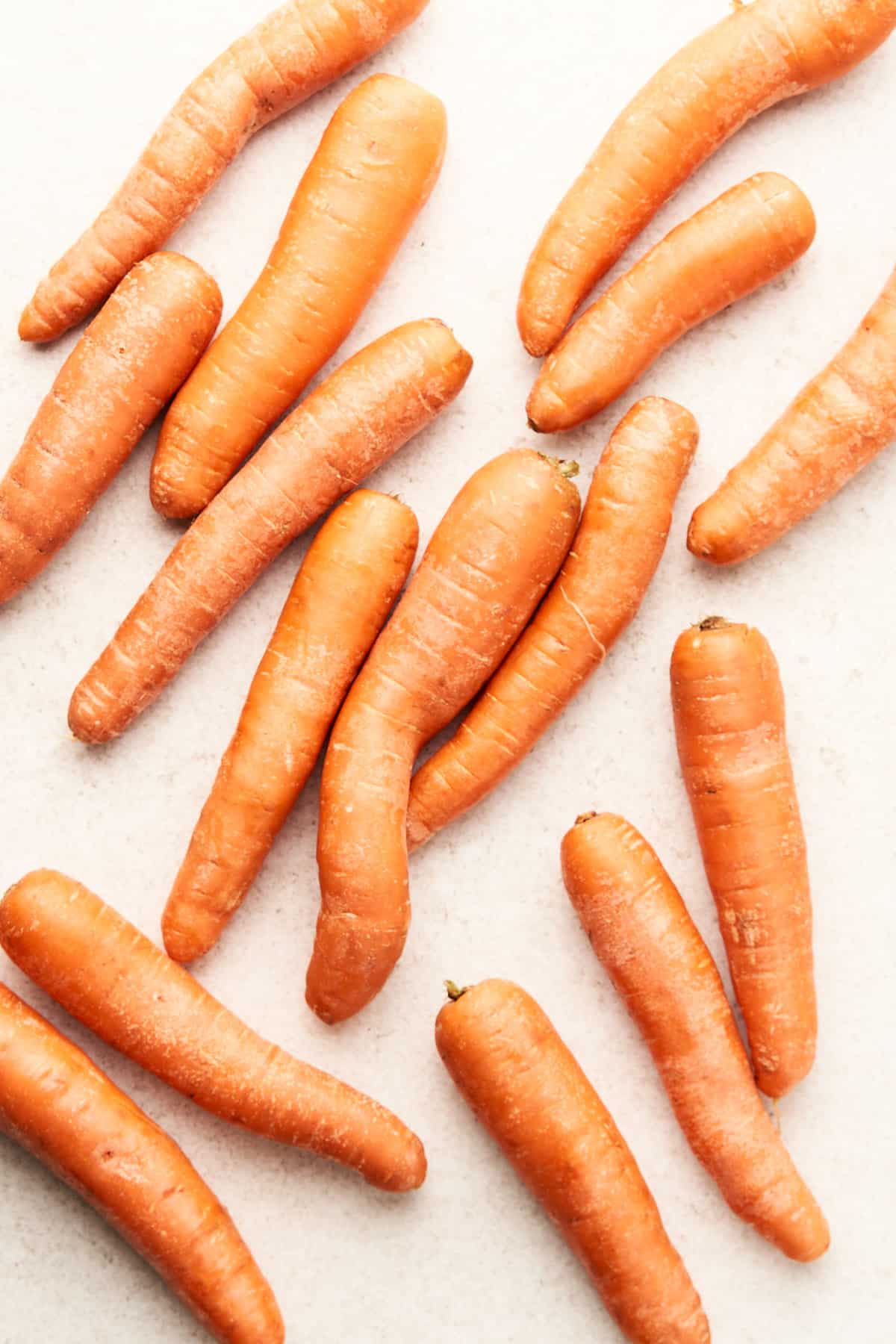
Carrots
Carrots are one of the most versatile yet under appreciated veggies in the grocery or garden. If you want a quick spring to summer snack for the kids, whip up Quick Carrot Jello, or shred a carrot over a salad for a vitamin A and color boost. If you want to try something different, try these Asian Carrot Noodles as a low-carb alternative to ordinary pasta.
Our favorite use of carrots may, however, be in smoothies. Give one of these a try:
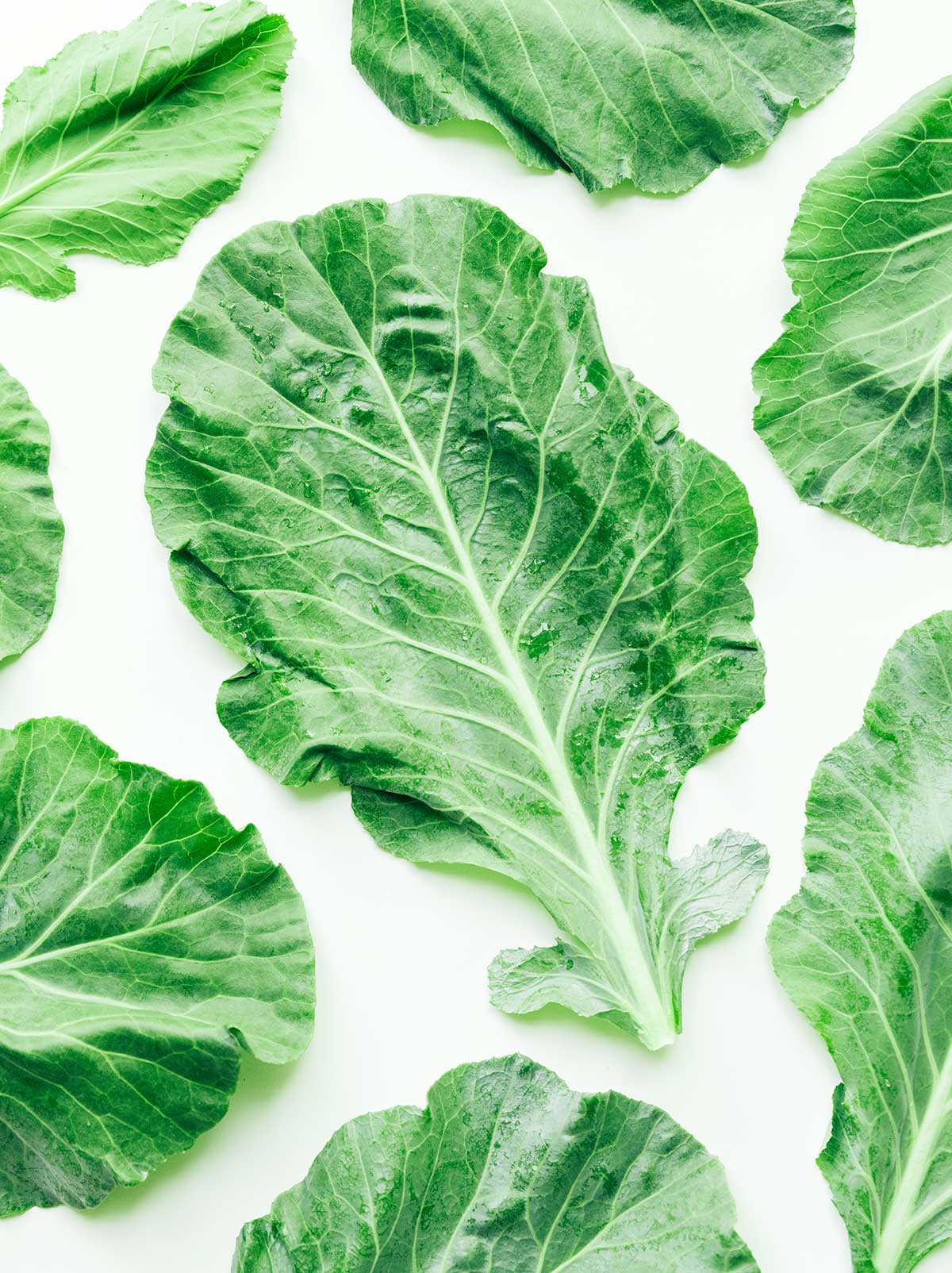
Collard Greens
Collard greens are in season through May and are as great for your health as they are in your cooking. They don’t have the bitter taste you can get from kale or spinach, making them ideal for a range of recipes. You can sauté ’em up and enjoy them in lemon juice and garlic seasoned deliciousness. But, an even better use is in wraps the same way you’d use lettuce. Veggie wraps are even better with these greens because their thick texture makes them less prone to tearing! Here’s our step-by-step guide on how to make collard wraps.
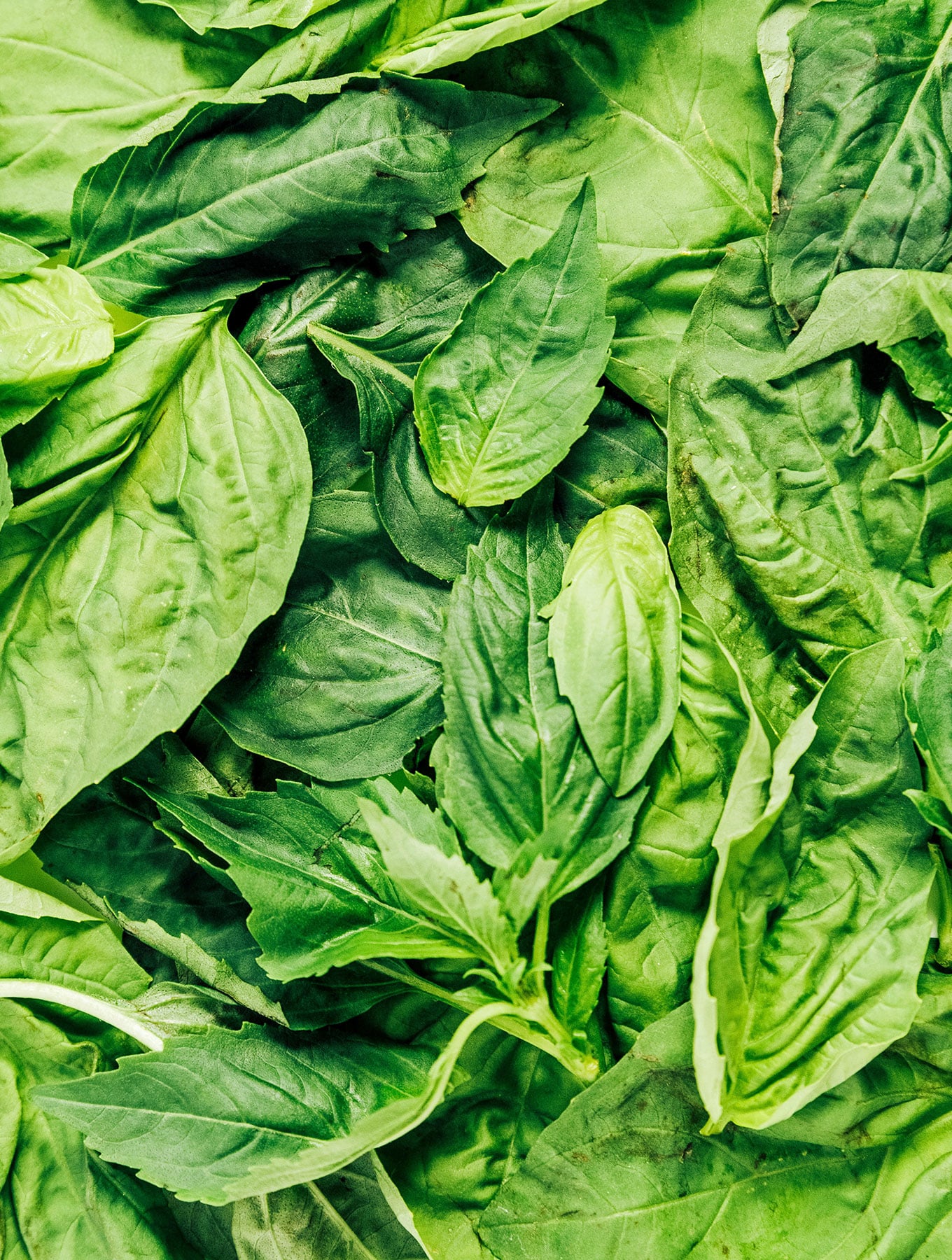
Tender herbs like Basil, Chives, and Parsley come into their best in the Spring.
Delicate Herbs: Basil
Basil has a peppery flavor with just a hint of anise (licorice), though different varieties of basil have differing levels of sweet and peppery flavor. Some great spring and summer cooking uses include:
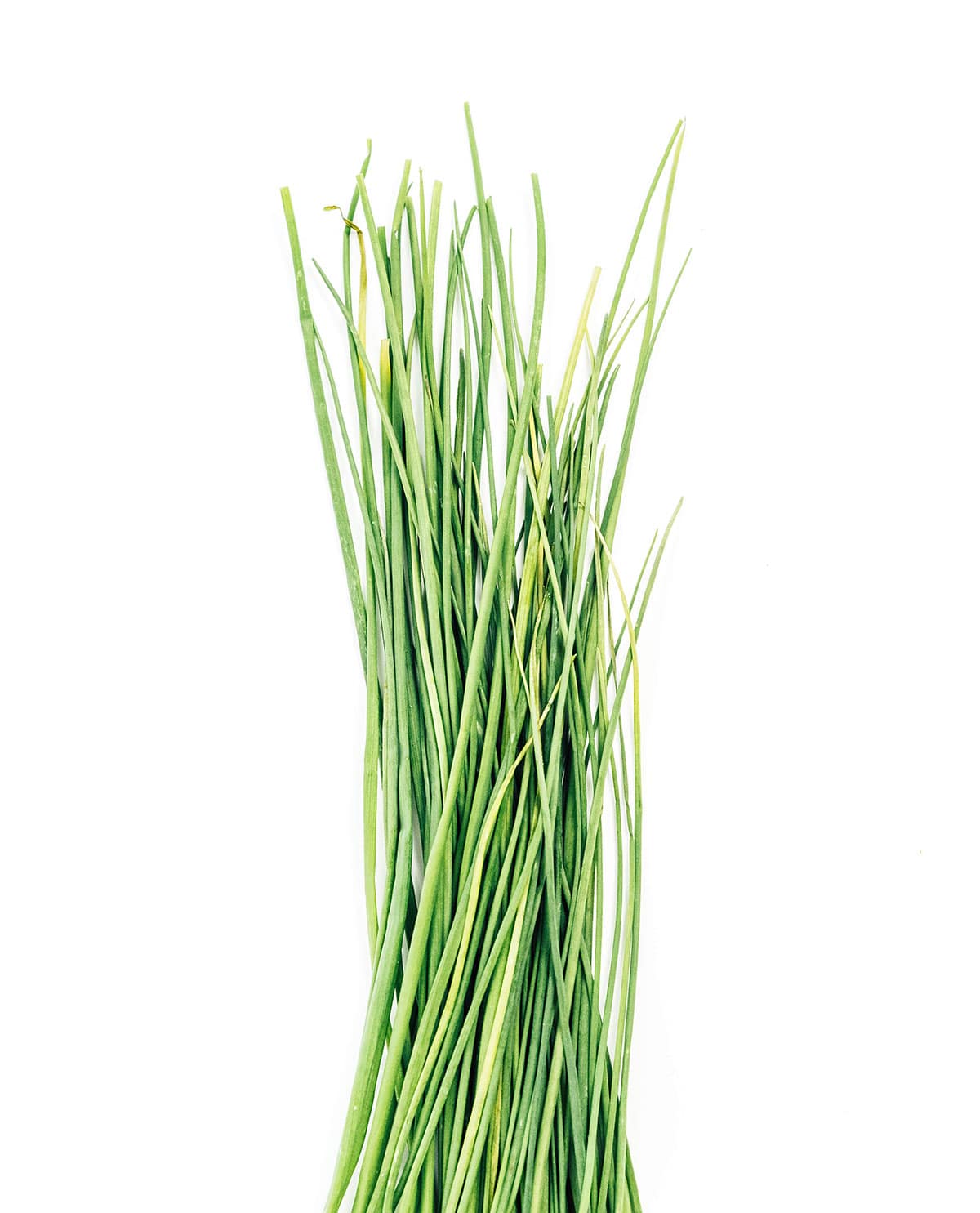
Delicate Herbs: Chives
Chives are often mistaken for green onions, but they have a milder taste than onions. Chives are a great garnish for use in almost any type of savory dish: vegetables, potatoes, omelets, soups, etc. They can also be cooked into recipes to provide a flavor boost, but should be added toward the end of the cooking process to preserve their flavor.
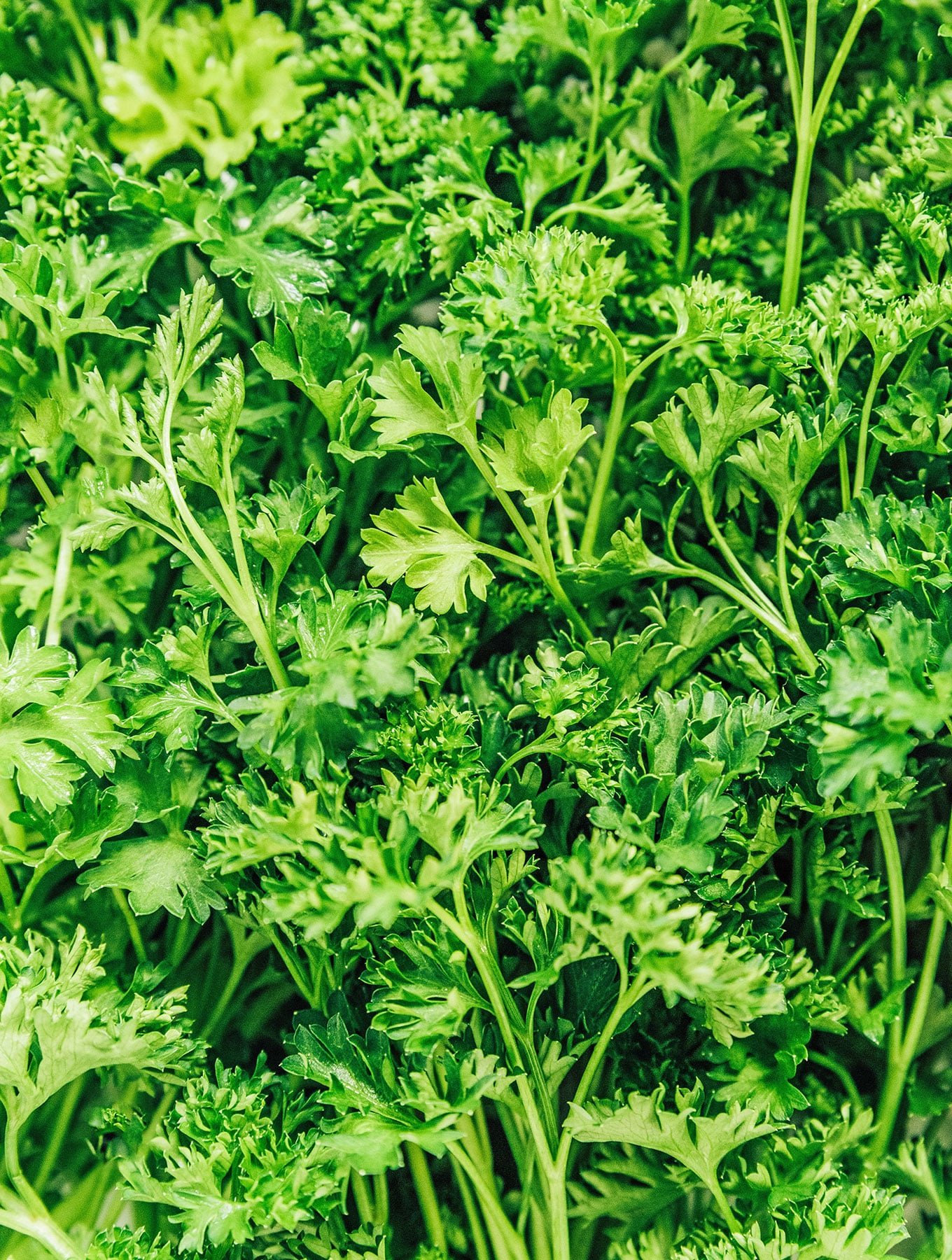
Delicate Herbs: Parsley
Parsley has a mild taste that compliments a variety of recipes to include salads, soups, veggies, and more. While parsley is primarily an additive to recipes, it can also take center stage (like in this Parsley Salad!)
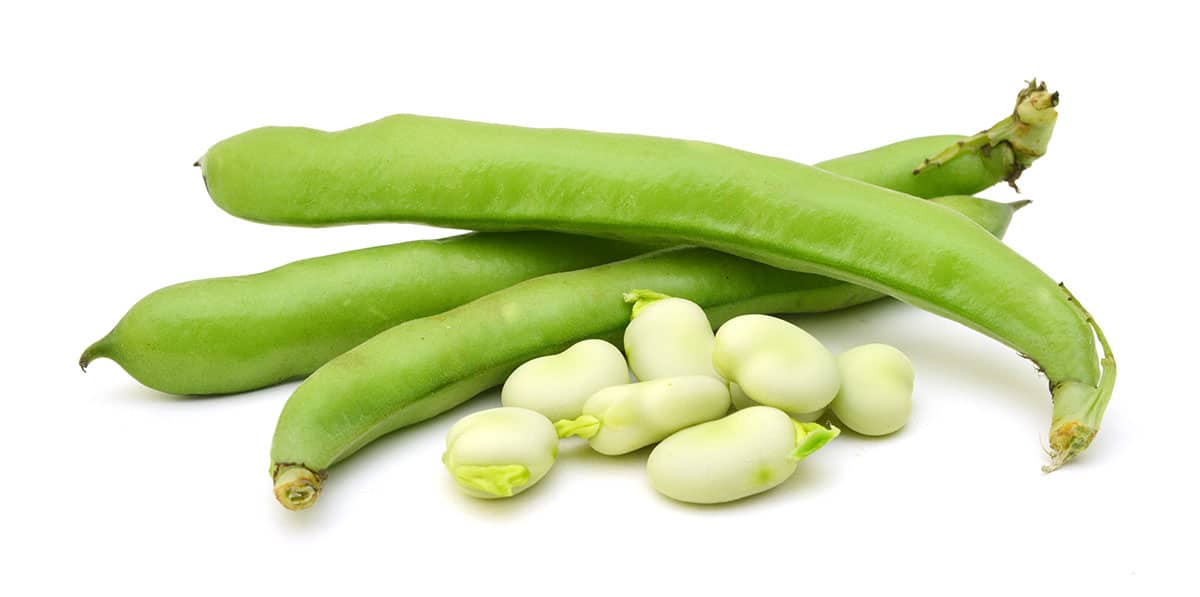
Fava Beans
Fava Beans are also known as Broad Beans, and are a type of bean commonly used in Mediterranean cuisine. They have been cultivated around the Mediterranean Region for thousands of years, and were eaten by the ancient Greeks and Romans. They require a bit of work to cook with as you have to first depod then blanch them to remove their tough skin. They can be sautéed, boiled, steamed, roasted, fried, put into salads, made into pesto or even eaten raw in their pods.
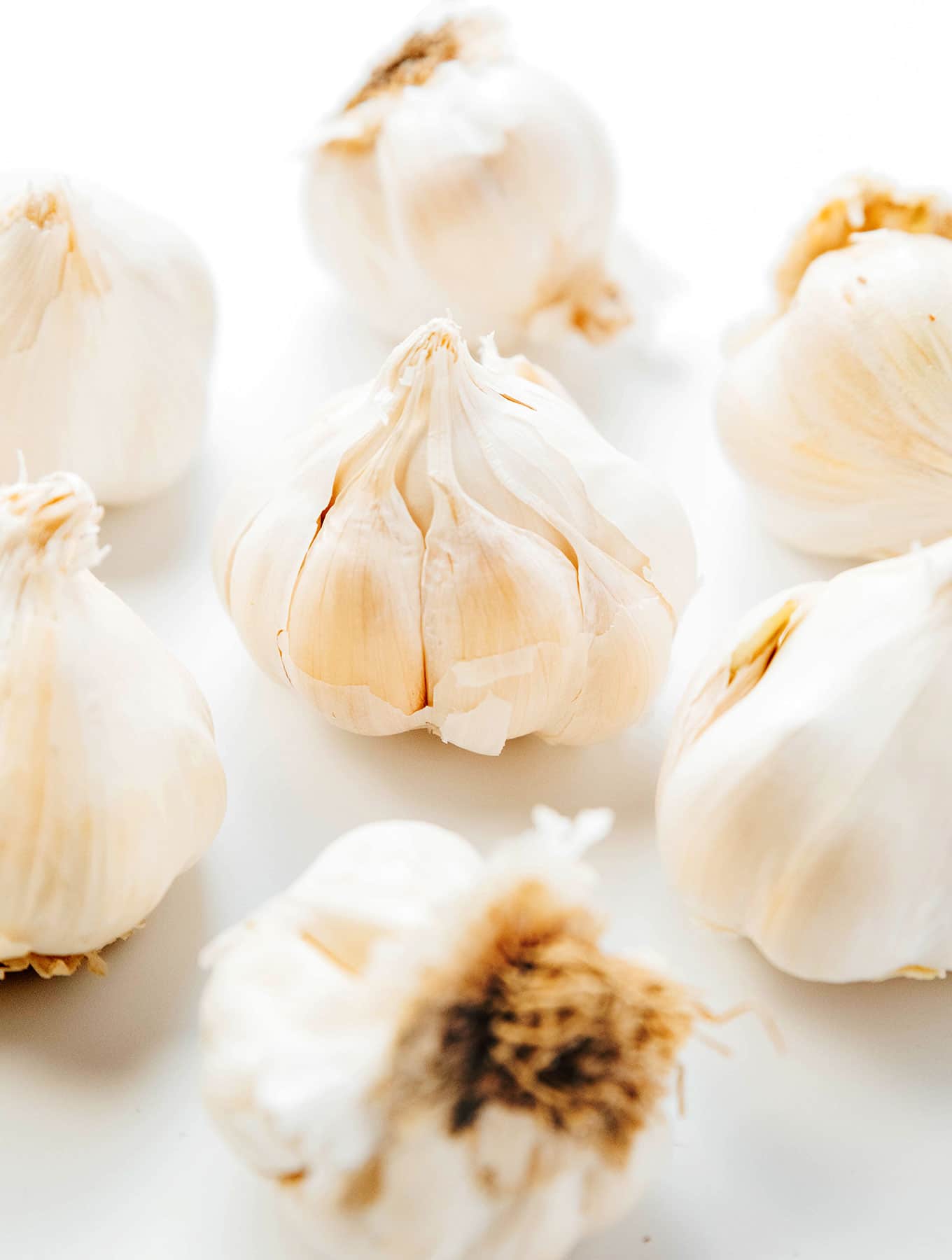
Garlic
If I could keep just one herb, spice, or flavoring in my kitchen, it would be garlic, and I don’t think I am alone in this. China is the world’s leading producer of garlic, but you’ll find garlic in most cuisines — American, Mexican, Eastern European, Mediterranean, to name a few!
Garlic is also a heart-healthy flavoring that aids in cholesterol and blood pressure control, and boosts your immune system. Garlic is of course great as the key ingredient in Vegan Garlic Bread, but our favorite Spring use is with sliced veggies dipped in Baba Ganoush.
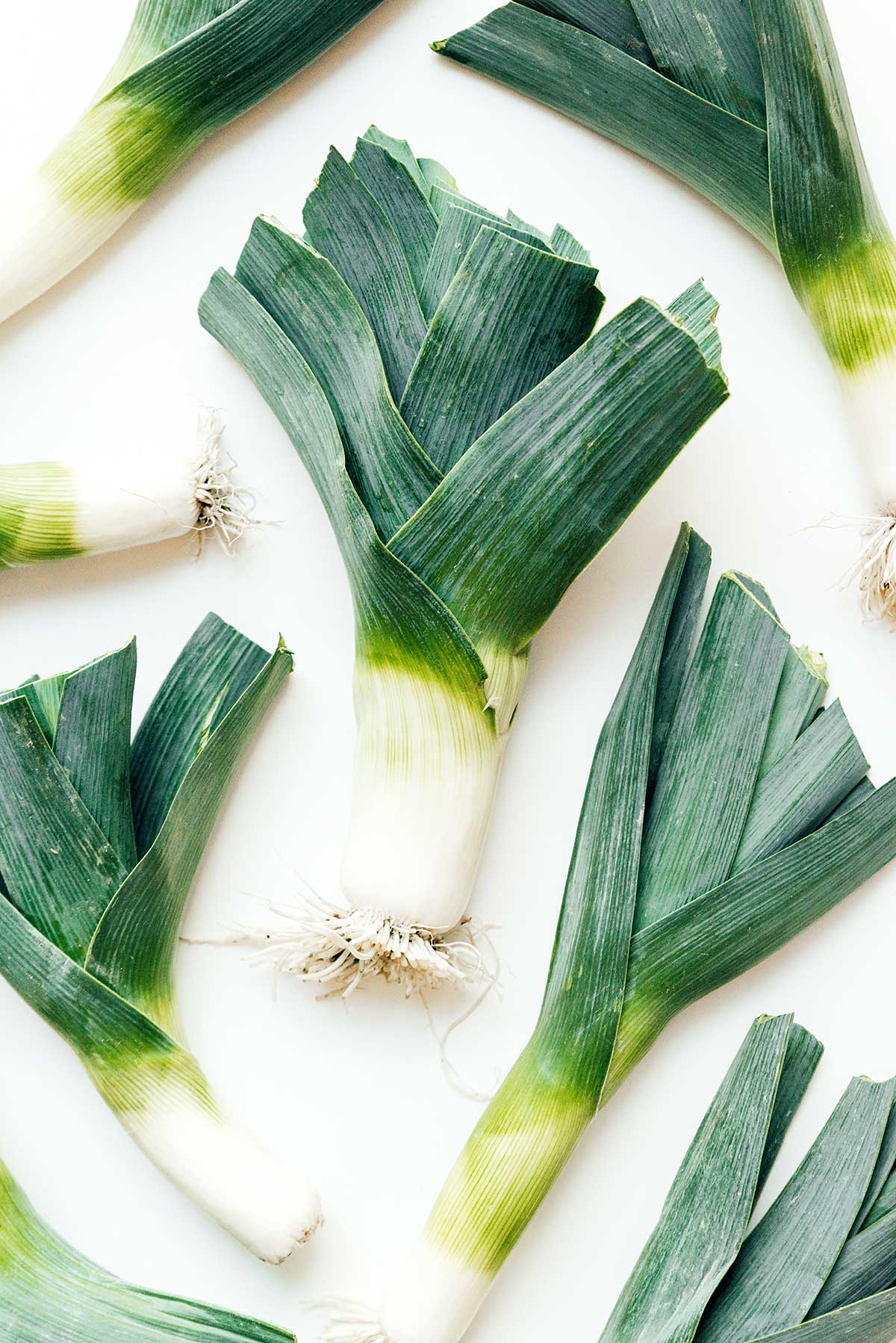
Leeks
Leeks are in the same family as garlic, shallot, and onions, and are similar to green onions. They do rather resemble large green onions, but their flavor is a bit milder with sweet undertones.
The white and light green parts of leeks are generally eaten while the darker ends of the stems are cut and discarded. The ends are edible, but just too bitter for most people’s liking. Their bitter flavor often relegates them to the garbage vs use in a good Goat Cheese Leek Quiche, or Leek Risotto.
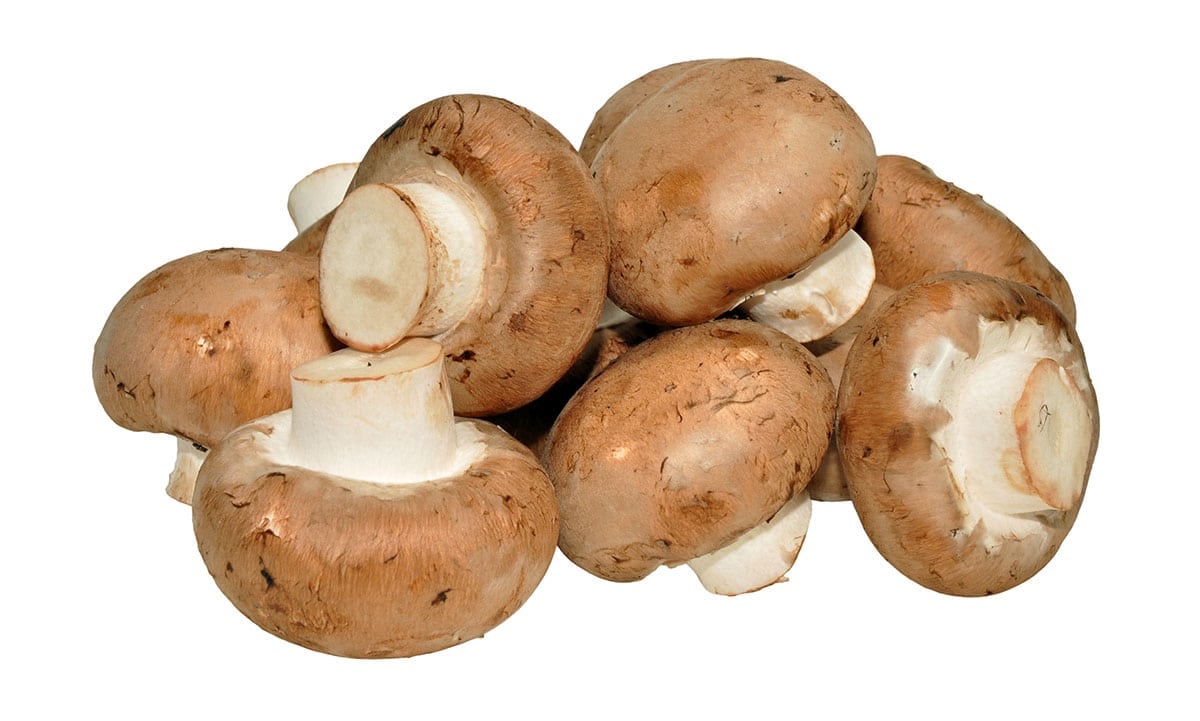
Mushrooms
There are a wide variety of mushrooms peaking almost year round both in the wild and under cultivation, so you can generally find them fresh. They have a surprisingly great nutrition profile with only about 6 calories per ounce with one of the highest levels of protein per calorie of all veggies.
You can spend about any amount on mushrooms. To give your friends or family a fancy treat check out Truffle Mushrooms. You can use everyday white mushrooms in these Mushroom Carnitas Tacos, and when you have friends over who don’t eat meat pick up some large portobellos and grill up a few of these Portobello Mushroom Burgers. Or, use oyster mushrooms to make these Mushroom Pulled Pork sandwiches.
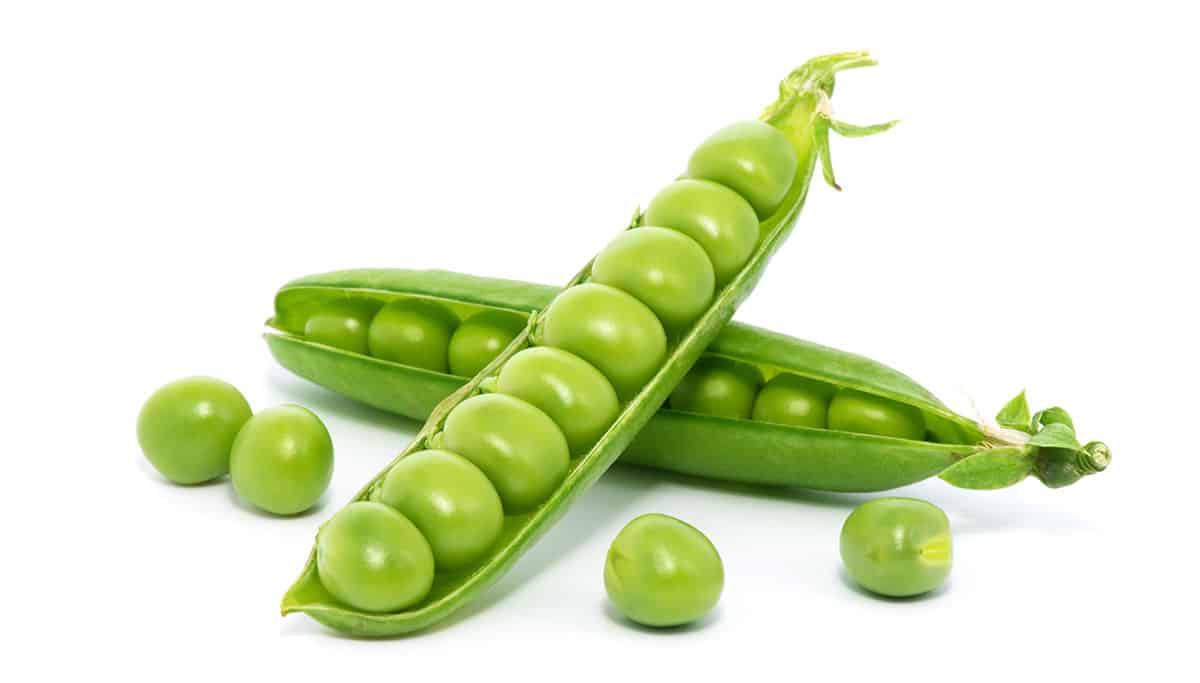
Peas
Peas are a bit higher in calories than many other vegetables due to their high starch content. Like most beans they provide about 25 calories an ounce. They are, of course, a versatile bean used in many soups, stews, and pasta dishes. Snap peas (sugar snap peas) are among our favorite varieties used whole in spring salads. Our favorite early spring feel good use of garden peas is in this Vegetarian Shepherd’s Pie, or on a cool early spring day a Dutch Pea Soup.
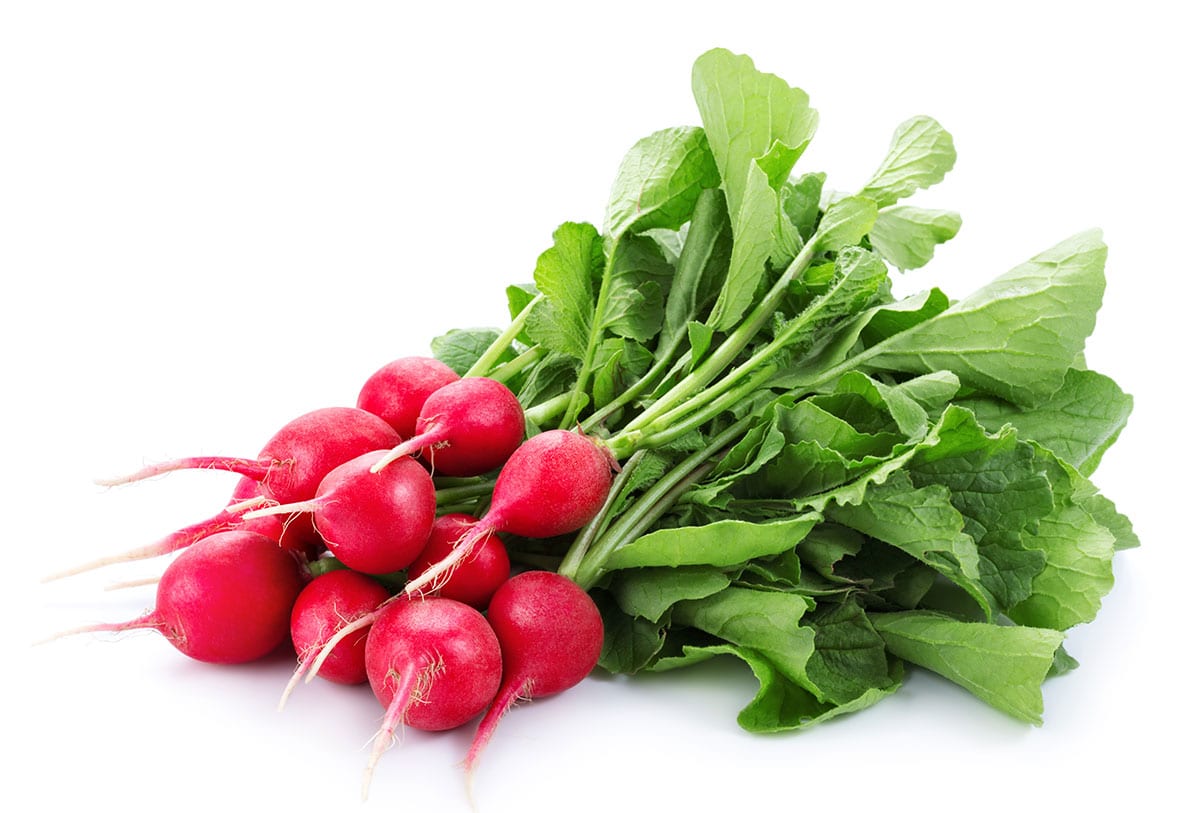
Radish
Radishes are in season during the winter and up through May. They originated in Asia over 3,000 years ago, but are today grown pretty much worldwide. They are a low-calorie root that is mostly eaten raw, but that isn’t a hard rule. Here are 7 Radish Recipes that will make you want to eat your veggies!
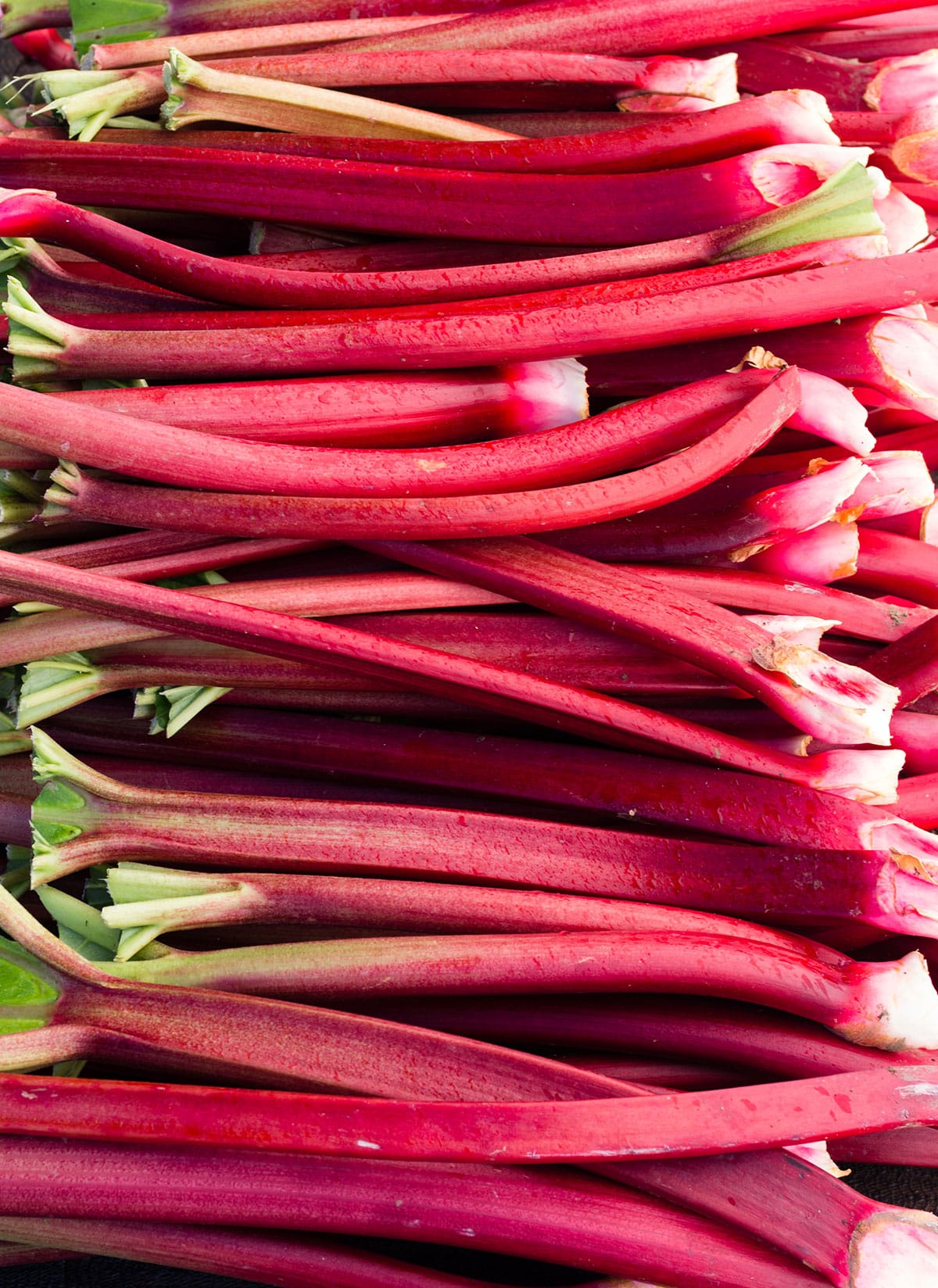

Rhubarb
Rhubarb can be a spring or summer vegetable depending upon where you live. I grew up in Alaska, where spring was about 4 weeks long, but when the long summer days started Rhubarb grew around the neighborhood like crazy. We cut the thick red stalks and used them in desserts all summer. (We literally had a whole cookbook devoted to Rhubarb.)
And when you’re a food blogger from Alaska what do you name your puppy? Meet Rhubarb, my little sweet and sour Aussie mix (she has a her own website here dedicated to all things dog food!)
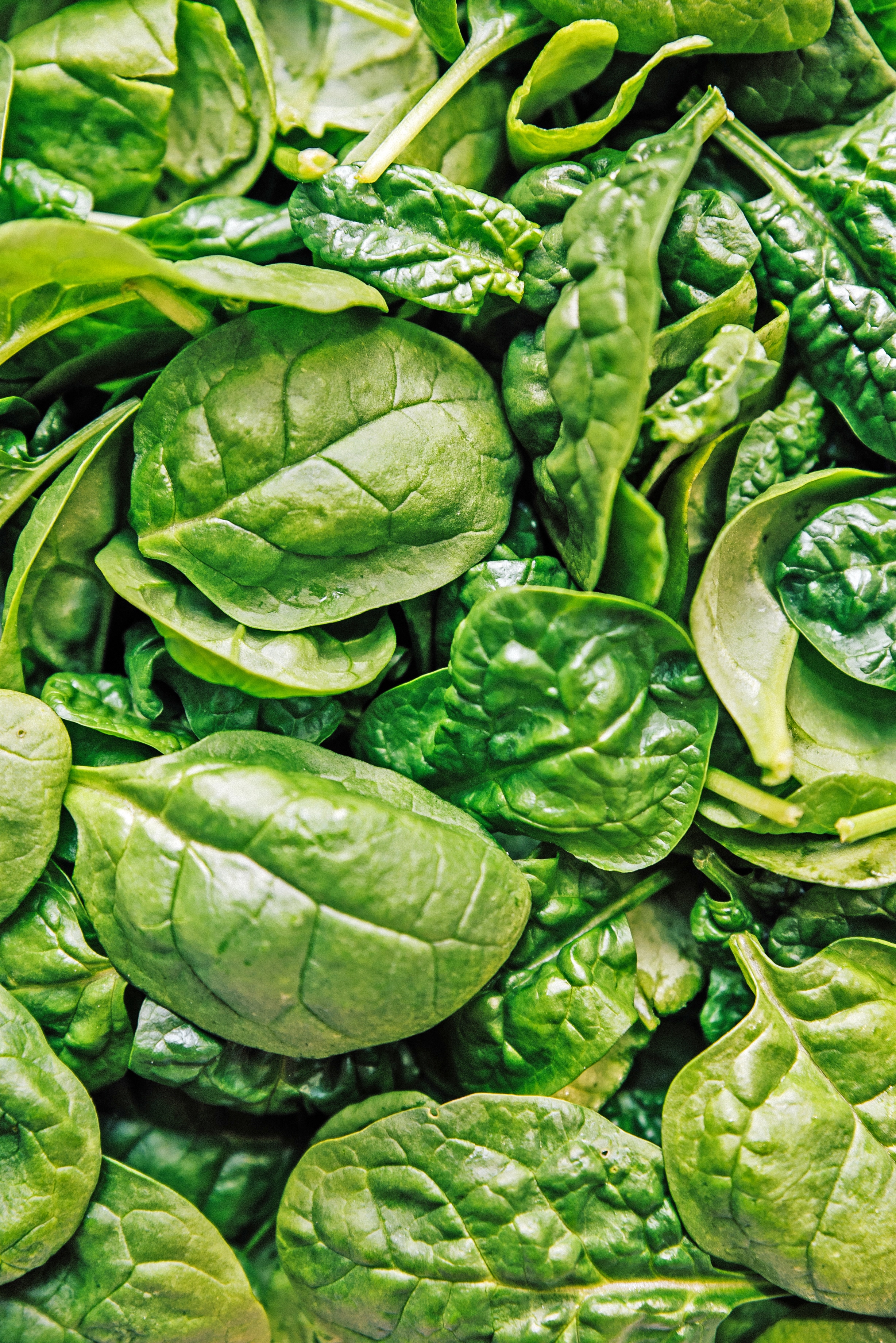
Spinach
Spinach is in peak season through June, but of course is sold year round. You can use it in pretty much any use you would use lettuce, kale, or arugula. It is loaded with iron, protein, and a host of vitamins and micronutrients. Check out further nutritional information in our Everything Spinach Guide.
Spinach is infinitely useful in the kitchen. Put it in all your salads, on pizza, in breakfast cuisine like these Egg White Frittatas, and of course smoothies. Even if you aren’t a green smoothie fan, you are apt to like this Spinach Nutella Smoothie. We won’t lie to you and say it is low calorie, but it is oh so good and loaded with spinach infused nutrition. You can even feed spinach to your dog.
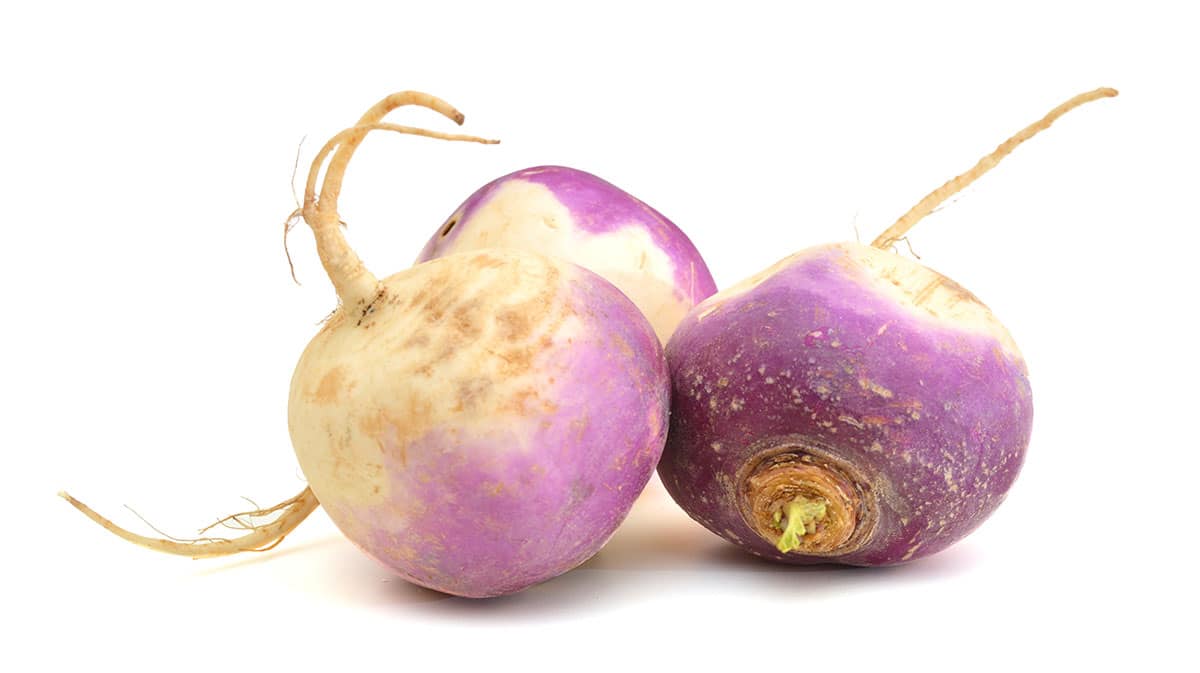
Turnips
Turnips are in peak season through April but are generally available year round. Similar to radishes, they taste rather like potatoes, or perhaps a combination of cabbage and potatoes. Turnips are often baked, boiled, or steamed, but the most common use may be to simply slicing them into garden salads. After a recent trip to Scotland, however, my indisputable favorite use is in this variation of Scottish Neeps and Tatties (neep is the Scottish nickname for turnip).
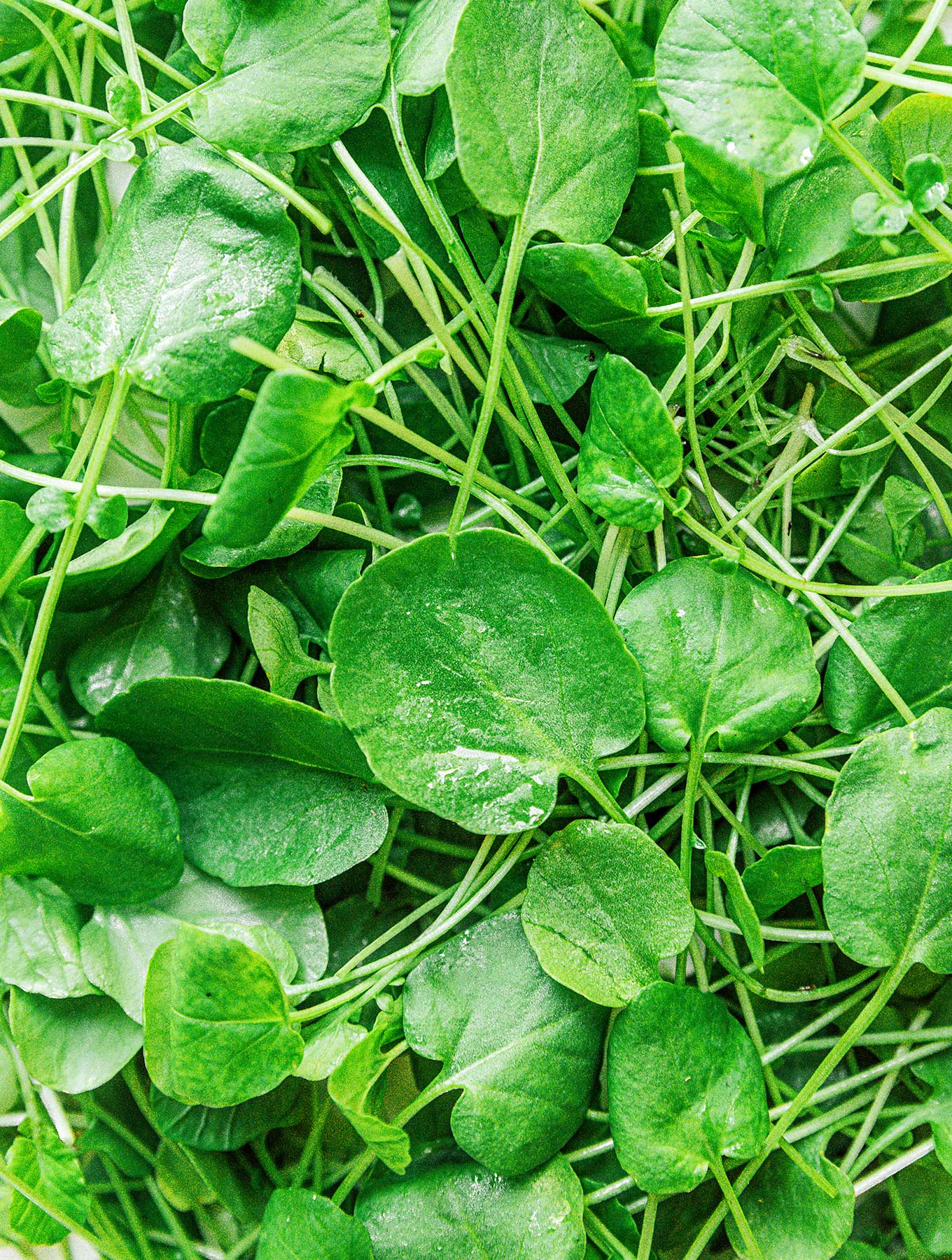
Watercress
Cress is believed to be one of the oldest leafy greens eaten by humans. It is part of the mustard and cabbage family which is where its spicy, peppery, and pungent flavor comes from. These greens are a good addition to just about any salad, but can also form a great salad base on their own as in this Watercress Citrus Salad. There are four main varieties of cress:
- Watercress: Is grown, as its name suggests, in water, and has the most pungent flavor of the varieties. You will want to be particularly diligent in cleaning watercress as it sometimes comes to the grocery still sandy. For more on watercress nutrition information as well as how to buy, store, and use watercress check out Watercress 101. And, did we say that cress makes a great Tropical Watercress Smoothie?
- Garden Cress: This variety is grown in soil and has a spicy flavor some liken to horseradish.
- Upland Cress: Is noted for its thinner stem and more delicate flavor. This variety often comes in plastic bags, with the cress still attached to the roots.
- Korean Watercress: This is a distinctly more crunchy and bitter cress variety.
Trivia Answer
The first day of spring in the Northern Hemisphere is March 20th!
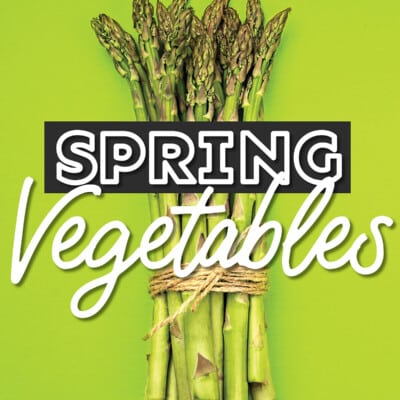
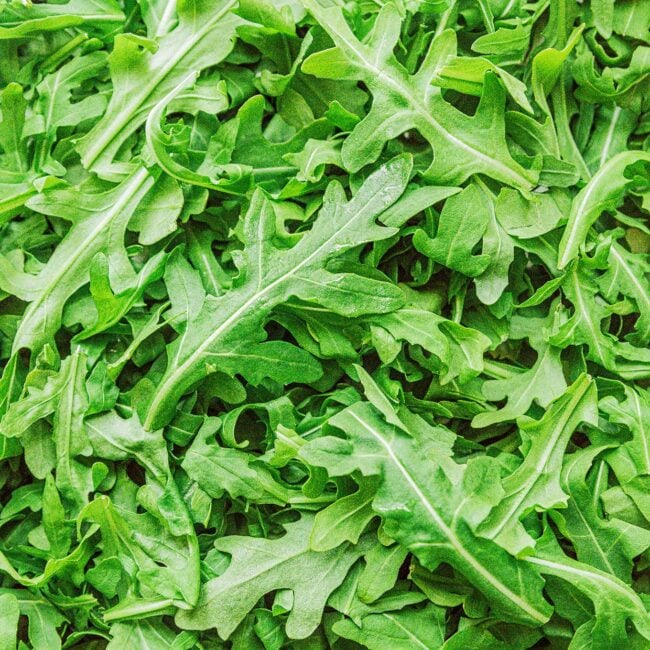
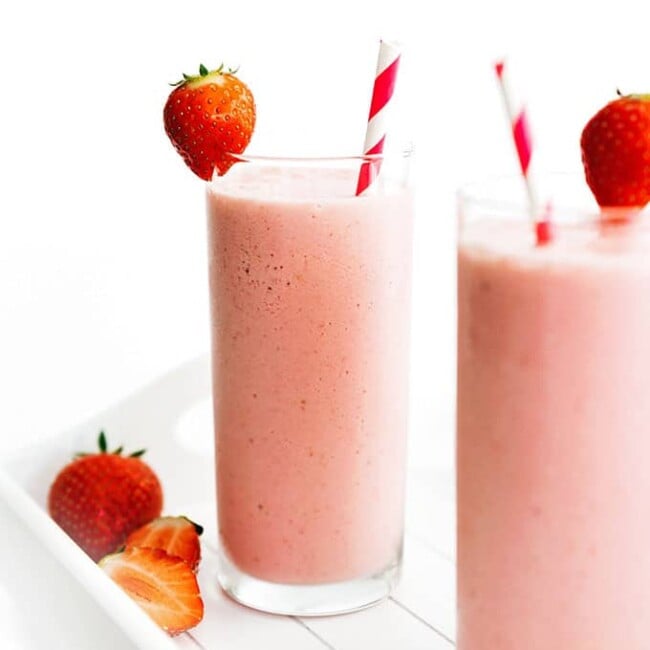
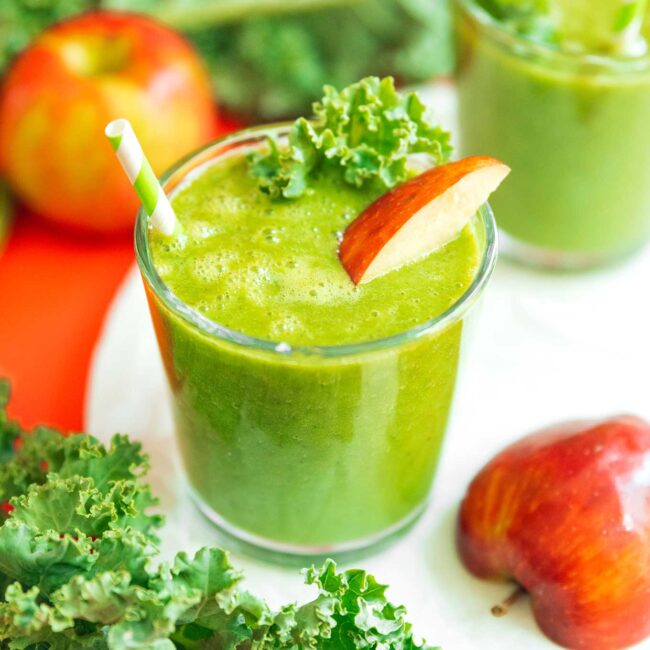

Leave a Comment